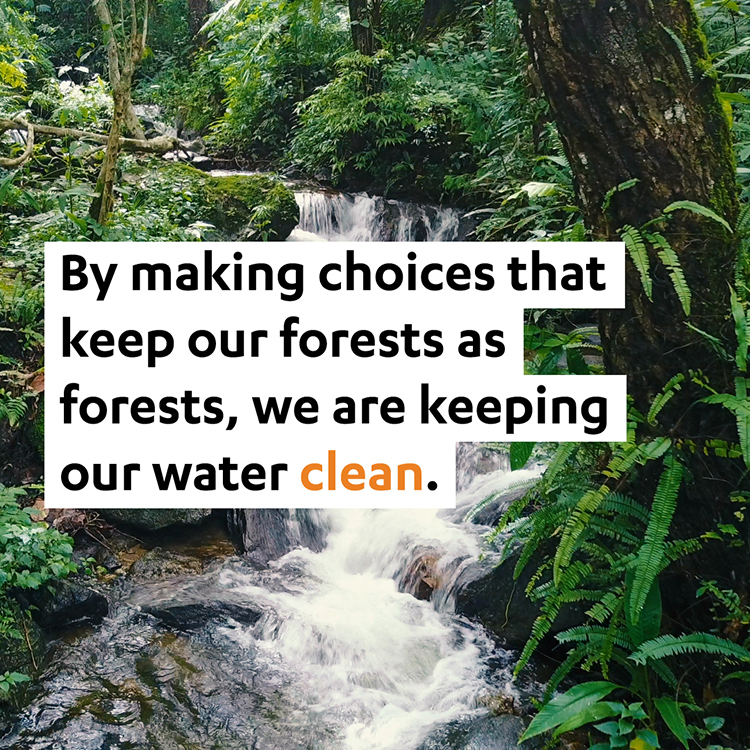Clean water grows on trees
The Mississippi Forestry Commission works to protect water quality throughout the state. Through sound management, forests decrease water pollution and increase the quality of drinking water.

Forests provide products we rely on daily. Wood for our homes and furniture. Household products like toilet paper and coffee filters. Medical items like bandages and sutures.
But, one of the most important things forests provide – that is often overlooked – is clean drinking water.
Forests improve water quality by filtering pollutants from the soil. On average, a single tree filters more than 36,000 gallons of water a year – that’s almost 100 gallons a day!
“In a sense, you could say clean water grows on trees. Many people don’t realize the major role our forests play in cleaning and protecting our drinking water. In fact, research shows that over half the drinking water in the U.S. comes from a forest.”
Russell Bozeman, MFC state forester
The Federal Clean Water Act of 1987 requires that states take steps to prevent drinking water pollution and to protect water quality.
The majority of Mississippi’s 19.2 million acres of forestland are privately-owned. By educating landowners about sound forest management practices, the MFC plays an active role in ensuring the integrity of the state’s drinking water.
“Research from the USDA Forest Service shows that forested watersheds consistently yield lower sediment and nutrient deposits to surface water and improve biological conditions,” Bozeman said. “What this means is that forests provide the cleanest water of any land used to keep drinking water safe and reliable.”
The MFC promotes Mississippi’s Best Management Practices (BMPs) in Forestry which are non-regulatory guidelines for silvicultural (growing and cultivation of trees) practices. These guidelines meet the requirements of the Clean Water Act.
In Mississippi, implementing forestry BMPs is voluntary. The MFC publishes a report every three years to evaluate the use and effectiveness of voluntary BMPs by the forestry community.
While the MFC monitors BMPs on approximately 850,000 acres annually, it is the responsibility of the landowner or timber owner to ensure that water pollution does not occur from forestry operations.
“Forests make positive contributions to the quality of life of Mississippians,” said Bozeman. “The MFC works with landowners, the forestry industry, loggers and other stakeholders to ensure that forestry practices are in compliance with the Water Quality Act and state law. While enhancing recreational and economic benefits.”
Visit our Water Quality page to learn more about the role the MFC plays.
Your local MFC forester can provide more details about forestry BMPs. Click here to find your MFC forester.
